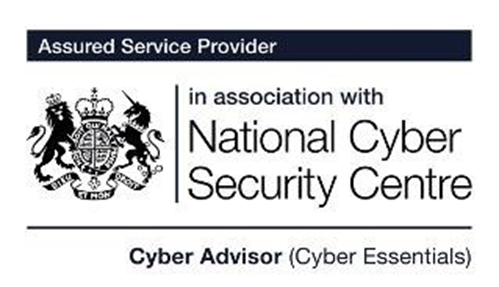Are you looking to get the most out of your managed IT support services without breaking the bank? If so, you’ve come to the right place. This article will discuss the various benefits of fully managed IT support services and how they can help save an organisation money.
We’ll also outline different types of managed IT support services, how to identify your needs for such a service, the most common IT support issues and troubleshoots, and solutions to these problems.
Finally, we will provide tips on what to look for when choosing IT support providers and how to get the most out of them without breaking your budget. Optimisingit.co.uk can help you with all your managed IT support services needs – visit https://optimisingit.co.uk/ today!
Defining Managed IT Support Services
A managed IT support service is a type of IT support that a third-party provider delivers. The IT Support provider manages and maintains the customer’s IT infrastructure and systems, allowing businesses to outsource their IT support needs. Managed IT support services can be delivered in-house or remotely, allowing customers to choose which option best suits their requirements.
They can also be provided on a pay-as-you-go basis or as part of a long-term contract, offering businesses cost savings over time.IT support providers use a tiered pricing model where they charge a monthly fee for a certain level of service depending on the size of the organisation and its specific needs.
With fully managed IT support, clients can benefit from experienced staff who understand their systems and can proactively monitor them for any potential problems or opportunities for improvement. Fully managed IT Support reduces downtime and improves overall efficiency and productivity, as companies can resolve issues before they become major problems.
Additionally, managed service providers often offer discounts on hardware and software purchases, helping organisations save money in the long run.
IT support providers usually offer a wide range of IT support services, including system maintenance, security updates, data backup, system optimisation, software installations, configuration, upgrades, user training, and more.
They can also provide custom solutions based on an organisation’s unique needs, such as website design or application development. With so many benefits available from managed services, it’s no wonder why companies are turning to them more and more when looking for affordable yet reliable IT support options.
The Benefits of Having Fully Managed IT Support Services
Having managed IT support services can provide several advantages for businesses. With access to 24/7/365 monitoring, companies can rest assured that their systems are running optimally and that potential issues can be addressed by the IT support provider quickly before they become significant problems.
Furthermore, managed IT support services providers have the expertise to keep businesses’ IT infrastructure up-to-date with industry best practices and standards. It helps ensure that the company complies with any necessary regulations and can benefit from the latest technologies available in the market.
The insights an IT support provider provides can also help the company identify areas where they may be falling short of industry standards or could make improvements to increase efficiency and productivity. These recommendations often have data backing, which allows organisations to make more informed decisions regarding their IT investments.
Finally, managed services often come at a lower price than hiring an in-house IT team or paying for individual repairs as needed. It makes them an attractive option for those looking for cost-effective solutions regarding their IT needs.
The Different Types of Managed IT Support Services
There are three main types of managed IT support services: desktop support, server support, and network support. Each service offers different benefits and can save an organisation money in the long run.
Desktop Support
Desktop Support is the most basic form of IT managed services and usually includes hardware maintenance, desktop software installation and updates, issue resolution, and remote user monitoring. This type of service is suitable for businesses with a limited number of users or those that don’t require mission-critical applications or data to be accessed remotely.
Server Support
Server Support involves ongoing server maintenance and monitoring their performance to ensure they run efficiently. Additionally, server support often provides advanced analytics capabilities that can help identify problems before they arise, thus helping reduce downtime and improve productivity. This type of service is suitable for businesses with more extensive networks and mission-critical applications or data that need to be accessed remotely.
Network Support
Network Support helps organisations manage their IT infrastructure, including routers, switches, firewalls, and other networking equipment. It also includes proactive monitoring to ensure all components are functioning correctly and up-to-date with the latest security patches. This type of service is ideal for businesses with extensive IT infrastructures that need more sophisticated management than what desktop or server support can provide.
By leveraging one or more managed IT services, organisations can benefit from experienced staff who understand their systems and cost savings from discounted hardware purchases. In addition, many IT support providers offer round-the-clock monitoring to resolve issues quickly without causing costly downtime. With this in mind, it’s easy to see why opting for an IT managed service makes sense both financially and operationally for any business looking to optimise its operations without breaking the bank!
Identifying Your IT Support Service Needs
When determining the best fully managed IT support for your business, it is important to identify your specific needs. The first step in this process is to assess your current goals and objectives. By understanding where you want to take your business, you can set achievable short-term and long-term objectives to help guide your decision-making when choosing an IT support provider.
The second step is to consider what IT resources and infrastructure you already have. Are there any areas of existing technology that you could improve? Do you need additional resources to meet the demands of your organisation? Making a list of the IT services and solutions that fit best with your organisation’s needs will help ensure that you get exactly what you need from an IT support provider.
Finally, create an inventory of all the specific IT support services that your business requires. It could include basic computer maintenance tasks such as software updates, hardware upgrades, network monitoring, data backup, or cybersecurity measures. It can also include more advanced services such as cloud hosting and storage, automation tools, or analytics programs. Once you have identified these key areas of need for your business’s IT infrastructure, it will be easier to find the right service provider who meets those requirements without breaking the bank.
Identifying these critical pieces of information before selecting an IT support provider will ensure you get what you need at a price point that fits your budget. With careful planning and research into different providers and their offerings, businesses can ensure they get the most out of their managed services without overspending on unnecessary features or services.
The Most Common IT Support Issues and Troubleshoots
Keeping up with IT support needs can be a challenge for any business. From hardware and software issues to networking problems, there are many common IT support issues that companies must manage. To ensure your business runs more efficiently, it is crucial to understand how to troubleshoot these issues quickly and effectively.
Hardware-related problems are often the most common source of IT support issues. It can include faulty components, drivers, malfunctioning displays, or slow processing speeds. To diagnose these problems, you should first check your device’s physical condition and ensure all connections are secure and properly connected. If this does not resolve the issue, then you should look into reinstalling drivers or performing a factory reset on the device in question.
Software-related problems can also cause significant headaches for businesses. Software-related issues include compatibility between different programs, applications crashing unexpectedly, or experiencing unusual behaviour when opening specific files or applications. To address these software-related issues, it is important to update all programs and applications on the system before attempting any other troubleshooting steps. Additionally, if you are using third-party apps that may be causing conflicts with other programs on your system, then it would be wise to uninstall them as well so
as not to cause further trouble down the road.
Networking problems such as slow connection speeds or dropped connections can also lead to major disruptions in workflow if left unresolved for too long. If you experience network-related difficulties, it is important first check your router settings and ensure they are configured correctly for optimal performance. You should do this before further troubleshooting steps, such as resetting the router or trying alternative broadband providers if available in your area.
By identifying and troubleshooting common IT support issues quickly and effectively, businesses can ensure their technology works at peak performance without resorting to costly outside help whenever a problem arises. However, had these issues been caught earlier, you could have avoided them altogether. Regular maintenance checks on hardware and software components and closely monitoring network activity for signs of trouble will help ensure that minor problems don’t become major ones.
How Managed IT Services Reduce IT Spending
Managed IT services can reduce IT costs for businesses in a few ways. Firstly, managed services allow organisations to consolidate multiple IT services into one solution. It provides economies of scale and reduces the cost of operating different solutions.
Secondly, managed IT solutions often require fewer internal staff members than traditional in-house solutions, saving money on salaries and training costs. Additionally, having fewer staff members also increases operational efficiency and productivity as there is less time wasted trying to manage multiple systems or troubleshoot technical issues.
Finally, managed services can help improve business continuity and disaster recovery planning and execution. With a managed service provider looking after your digital infrastructure, you have access to data backups, system monitoring, and other essential tools that enable you to recover quickly from any disruptions or cyber threats that may occur. These tools are handy during times of crisis when resources are limited or unavailable – such as during natural disasters or pandemics – allowing businesses to stay resilient in the face of disruption.
In summary, by leveraging managed IT services, organisations can save money on hardware, staffing, training, and more – all while benefiting from increased operational efficiency and improved business continuity planning.
Solutions To These Problems
Finding solutions to common IT problems can be tricky, but it is possible to get back on track with the right approach. The first step is to assess the problem and decide on the source of the issue. Is there a hardware issue? A software issue? Or something else entirely? Answering these questions will help you determine the best solution for your problem.
Once you have identified the source of the issue, you can start exploring potential solutions. If it’s a hardware issue, for example, you may need to purchase new parts or repair existing parts. If it’s an application-level problem, then troubleshooting software updates or patches may be necessary. In any case, it pays to think through all possible solutions before taking action.
If your first solution doesn’t work out as expected, don’t panic! Instead, take a step back and review what went wrong. Was there something unexpected that caused a different outcome than expected? Did you miss something in your assessment process? You will eventually find a working solution by analysing what happened in detail and approaching each step with a methodical mindset.
It would help if you also kept in mind that finding effective solutions often involves collaboration between teams within an organisation and outside sources such as vendors or partners. When implementing changes or fixes involving multiple stakeholders, ensure everyone is on board by keeping them informed throughout the process and giving them clear instructions on how they can contribute to resolving issues quickly and efficiently.
In summary, when faced with IT problems, it is essential to take things slowly and methodically rather than jump into quick fixes without consideration for potential long-term effects on performance or stability. By carefully assessing each situation and reviewing different potential solutions from internal and external sources, organisations can ensure they get back up and running as quickly as possible without breaking their budget.
What To Look For When Choosing a Fully Managed IT Support Provider
Choosing the right managed IT support services provider can be a difficult task. It is important to consider several factors before committing to an IT support provider to ensure you get the most out of your investment.
First and foremost, consider the size of your company and what IT support needs you have. Many providers will specialise in certain types of businesses or sizes and may not be suited to yours. Make sure that you research any potential providers thoroughly to ensure they can meet your specific needs.
Experience in managed IT services is also an important factor when choosing IT support providers. Look for a provider with experience providing solutions for similar-sized companies or those with similar systems and processes as yours. It will ensure they have the knowledge and expertise to provide effective solutions for your business.
Consider the company’s reputation when selecting IT support providers. Look for online reviews from customers so you can get a sense of their customer service record and how reliable their services are.
Additionally, ask current customers about their experiences with the provider, and if there were any issues they encountered while using their services.
In addition, consider the range of IT services offered by each potential provider before deciding which one best suits your needs. Some providers may offer more comprehensive packages than others, so make sure that whatever package you choose covers all aspects of your organisation’s IT requirements from monitoring systems to responding quickly when problems occur.
Finally, check whether or not a potential provider is willing to work with you to customise a managed IT service package specifically for your organisation’s needs. A good provider should be open to discussing bespoke solutions that fit within budget constraints yet still meet all of your technical requirements. Finding this balance between cost efficiency and quality service is essential when selecting an IT support provider partner for long-term success.
Managed IT Support On a Budget
Careful planning and research are essential when it comes to getting the most out of your fully managed IT support without breaking the bank. Start by outlining your specific needs to find a provider that meets them. Assess their capabilities, customer service ratings, and terms before agreeing. Take advantage of free consultations or introductory packages to trial their services, and consider how regularly you require assistance this could save money in the long run. If you want to jump to fully managed IT support, work with us at Optimising IT.
Our professionals collaborate with your team to offer entirely managed IT solutions for each element of your digital DNA. With our help, you may increase operational maturity without making a single hire.
Our primary goal is to ensure that your IT infrastructure functions to maximise value and advance your company’s success. Using a managed services plan from Optimising IT, you can turn IT from a cost centre into a profitable one.












